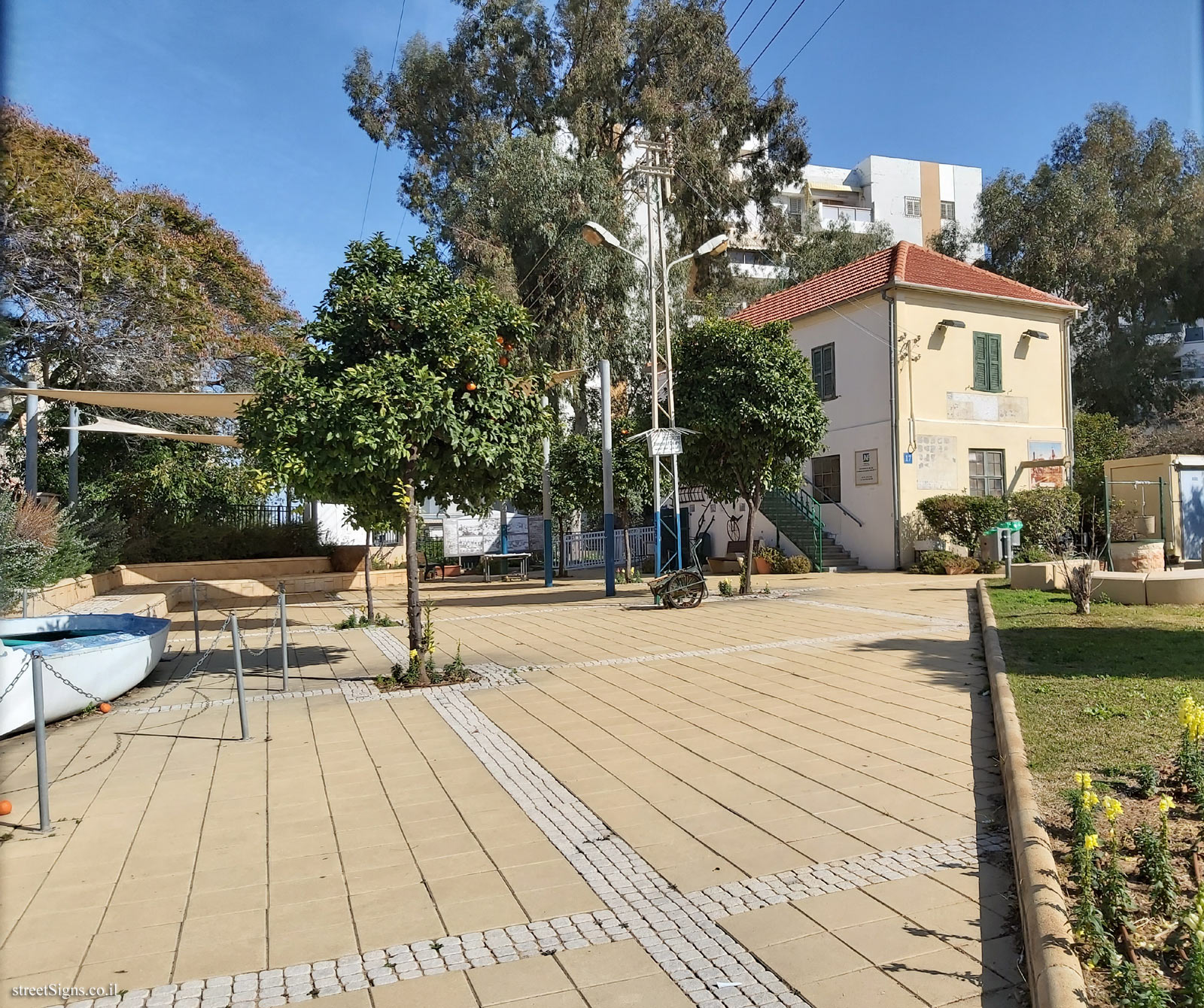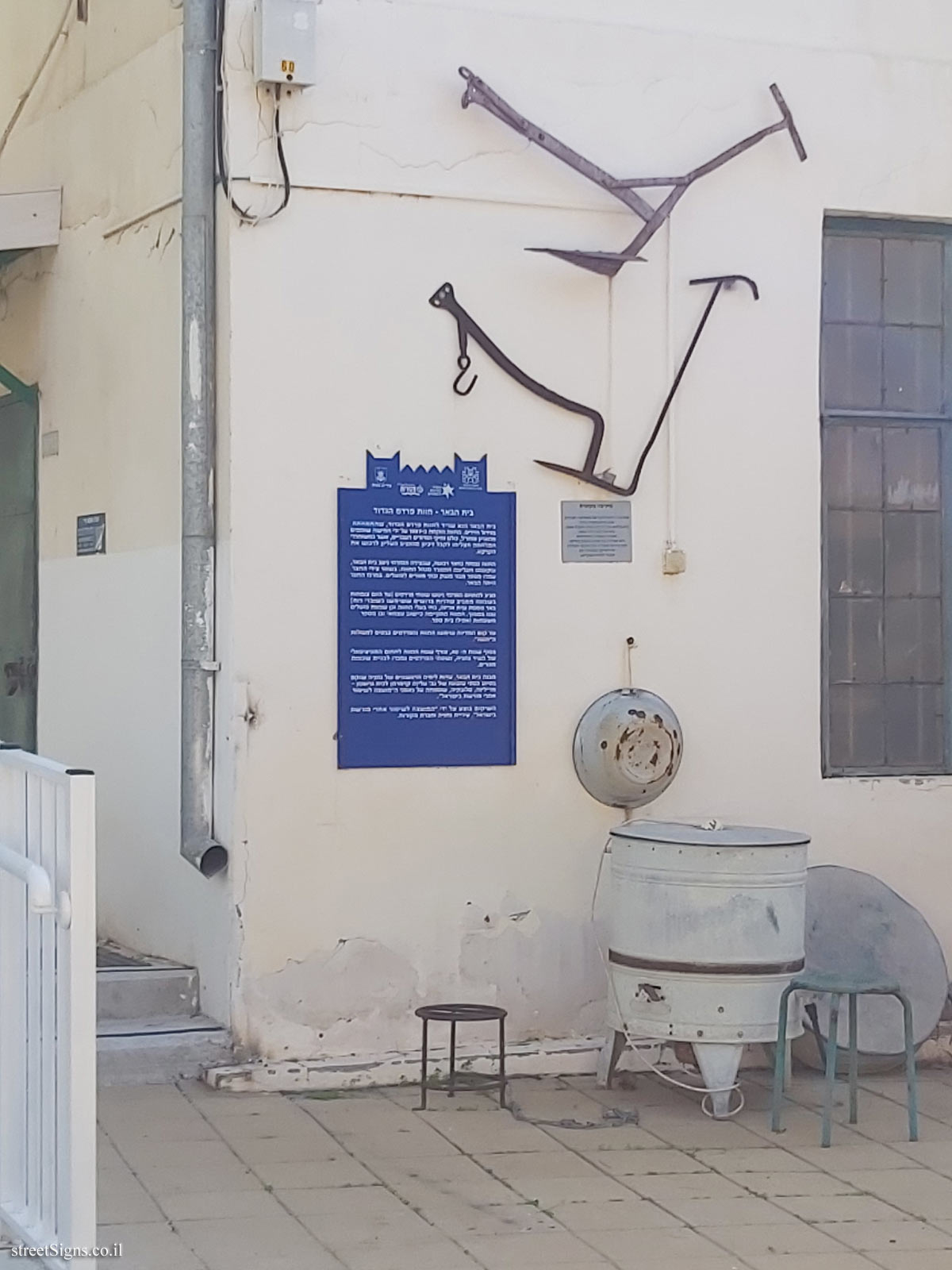The sign shape is square but its head is designed according to the silhouette of the old building of the Gymnasia Herzliya, which serves as a logo of the Council for the Preservation of Heritage Sites in Israel
The site was photographed that day
 Click for a larger image
Click for a larger image On the wall of the sign building, tools from the same period are displayed
 Click for a larger image Translation of the text on the sign
Click for a larger image Translation of the text on the sign:
Symbol of the Council for the Preservation of Israeli Heritage Sites
Netanya city emblem
The emblem of the Ministry of Culture and Sport
The Mekorot Company logo
The Well House - Battalion Orchard Farm The well house is a remnant of the regiment’s orchard farm, which specialized in growing citrus. The farm was established in 1927 by five partners from Israel and overseas, all veterans of the Jewish Battalion, who, as war liberators, were able to obtain a concession from the High Commissioner to purchase the land.
The farm was built as a square courtyard, on the eastern side of which is the well house, and on the upper floor lived the farm manager. On the other side of the courtyard stood a number of farm buildings and workers’ residences. In the center of the yard was the well.
Around the central complex were orchards (till today growing in the neighborhood around cypress boulevards that served as windbreaks) another well and a packing house, farmhouse houses as well as a working neighborhood were built nearby. The farm existed as an independent settlement with several families and even a school.
Until the establishment of the state, the farm and orchards were used as the basis for the Haganah’s operations.
In the late 1940s, the farmland was added to the municipal area of the city of Netanya, and the orchards were sold to build residential neighborhoods.
The structure of the well house, testimony to Netanya’s early days, was restored with the help of the estate of Mrs. Aliza Karmerman of the Grossman House - from Zilina, Slovakia, who was appointed as trustees of the "Council for the Preservation of Israeli Heritage Sites" Board of Trustees.
The restoration was carried out by the "Council for the Preservation of Heritage Sites in Israel", the Municipality of Netanya and Mekorot Company.

 Click for a larger image
Click for a larger image  Click for a larger image
Click for a larger image